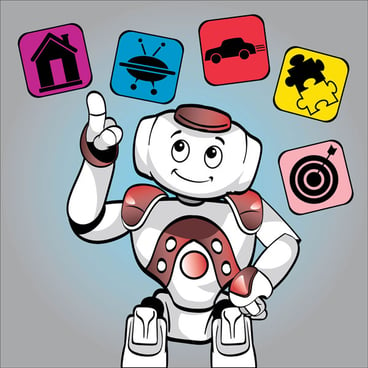By Hubert Ham
 Photo by Fredrick Tendong on Unsplash
Photo by Fredrick Tendong on Unsplash
Gamification and game-based learning are different instructional strategies, but both can work wonders for student engagement.
There’s a lot of hand-wringing over the amount of time kids spend with online gaming. Parents worry that online gaming eats into homework time and affects their kids’ moods, and teachers routinely catch their students sneaking time with Slither.io in class.
But there’s a change in the air. Some experts regard the time kids spend socializing with their friends while gaming online as a lifeline during the pandemic, while others maintain that video games can actually enhance kids’ remote learning. Meanwhile, non-digital games are enjoying a resurgence: Even before the pandemic, tabletop board games were experiencing a meteoric rise in popularity, and during the pandemic, classic games like Monopoly and The Game of Life have become a staple in many homes. The collaborative role-playing game Dungeons and Dragons, long considered nerd territory, is now cool, partly thanks to a boost from the popular television show Stranger Things.
Part of our jobs as educators is to tap kids’ passions to engage them in learning, and kids love games. Even if you think gaming isn’t your cup of instructional tea, you might have already turned to game-based learning platforms like Gimkit, and you might be surprised to find that games can engage students in the exploration of concepts and stories. Consider, for example, the video games Bury Me, My Love (the story of a young woman escaping war-torn Syria) and the “masterpiece” What Remains of Edith Finch (both of which can be used to teach narrative) and Engare, a geometry and art puzzle game that ars technica called a “clever, deceptively simple, and beautiful rumination on geometry and Islamic art-making traditions.”
If you’re intrigued, start by learning two key concepts—gamification and game-based learning—and what distinguishes the two.
GAMIFICATION
Gamification is the addition of game elements to non-game activities, from layering game-based reward systems to the learning process of quests, point systems, leaderboards, and badges. This also includes turning game mechanics (often borrowed from video games) into a tool that can be leveraged into equal parts motivational and practical. Examples include Barbarian Battlefield, a game one social science teacher created to teach the history of ancient Rome, and Prodigy, a quest during which students explore a world and answer math questions to earn in-game rewards.
With gamification, you still teach your content in a similar way that you always have, but the structures and systems that are employed in the class are different, often offering incentives. Examples can range from a simple, low-stakes team leaderboard system to one in which the lessons are reimagined as dramas in which the students are active role players. Teachers design the game, from its narrative (the world the characters inhabit) if there is one to its mechanics (how players are rewarded, advance, and win, for example). Teachers can gradually enhance their games with avatars and badges, or by upgrading characters and storylines.
Reward systems are typically the new component in a gamification scheme, but the learning activities themselves aren’t necessarily any different. For example, in a gamified unit in a social studies class, students may still have to read textbooks, do research, and write papers. Likewise, math students playing Prodigy will confront math problems that are no different from those in their textbooks or workbooks—it’s just more fun and engaging for many of them.
Advantages of gamification:
-
Done right, some maintain can engage both intrinsic (pleasure and fulfillment) and extrinsic (recognition and rewards) motivation.
-
It can engage a teacher’s own creativity in new ways, prompting them to explore new approaches to instruction and imagine whole new ways to reach their students.
-
If you create the content, then you also control it.
Challenges of gamification:
-
It requires time to set up quests and reward systems. Preparing these beforehand can be time-consuming at first, but very rewarding.
-
It requires a shift in how the classroom is structured and how students progress through their learning. This may require you to let go of certain things you hold dear and replacing them with new ones.
To learn more about gamification, checkout #xplap on Twitter (a reference to Explore Like a Pirate, a popular book about gamification by Michael Matera). There you will find a group of passionate teachers who share ideas on how they’ve enhanced their classrooms with gamification.
GAME-BASED LEARNING
Game-based learning, on the other hand, uses games—often existing board, social, or video games—to teach content in an engaging way, and allows students to explore the relevant aspects of games in a learning context designed by teachers (or game developers who specialize in creating educational games). On the basic end, game-based learning might include the board game Sorry! to teach counting; a more advanced example of game-based learning would be using a sophisticated video game with an immersive storyline, such as Bury Me, My Love, that like a book, introduces students to foreshadowing and other literary concepts through dialogue and gameplay.
In game-based learning, you’re leveraging rich content from extant games to engage students in a different learning experience; to a greater or lesser degree it replaces “traditional” delivery methods, like books or workbooks. Another example is taking a card game such as Poetry for Neanderthals and using it to teach students about syllables and syllabication or using Minecraft to teach writing. In this case, you’re not restructuring the classroom experience but rather tailoring a learning experience through the use of a game.
Still confused? Think of it this way: Gamification scaffolds your own lessons through game mechanics and an extrinsic reward system, whereas in game-based learning you leverage the content of a game to accomplish your desired learning outcomes.
Advantages of game-based learning:
-
It’s a low-risk entry point to explore the use of games, without having to redesign your classroom structure, and fits neatly into a lesson or unit much like other ed-tech tools such as the Sphero or Little Bits.
-
Costs are relatively low. With resources such as Youtube, you don’t even need to own the video game itself, as full walkthroughs are plentiful.
-
There are lots of existing yet specialized games to choose from. Whether it’s a video game, card game, or board game, there are many choices available.
-
It can be isolated to a short unit or experience without impacting the rest of the curriculum if it doesn’t go as well as you’d hoped.
Challenges of game-based learning:
-
If the lesson is not designed well, students can get caught up in the game and lose track of learning goals. Scaffolding and putting in activities such as Socratic seminars or discussions can help keep students on track, very similar to how novel studies go throughout a unit.
Discover more ways to bring gaming with RobotLAB!



